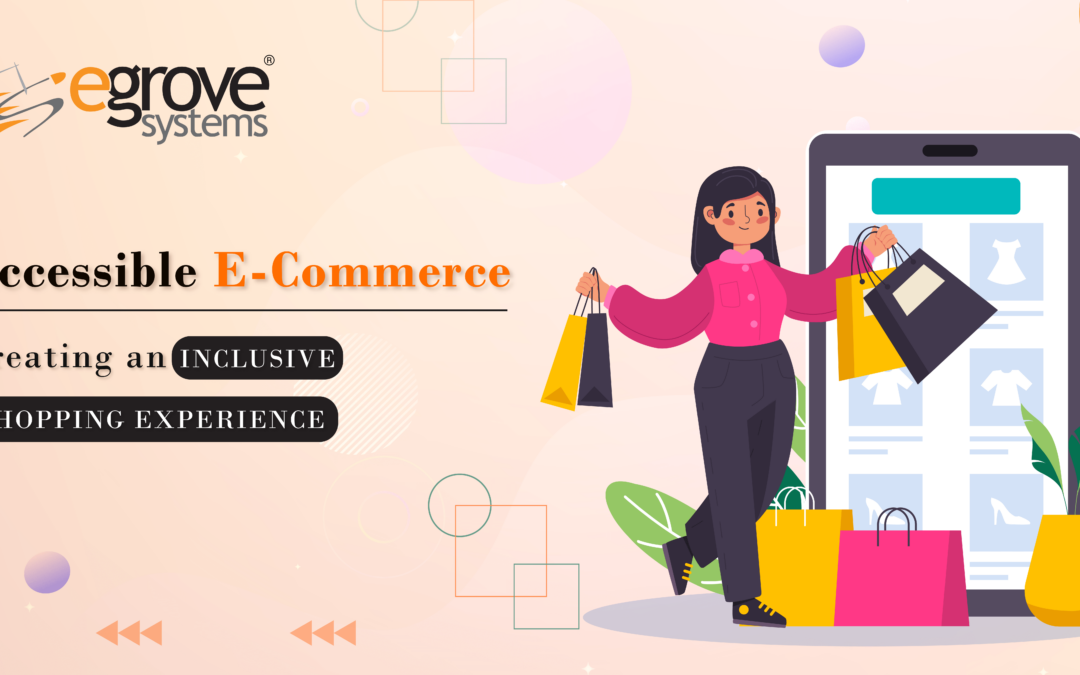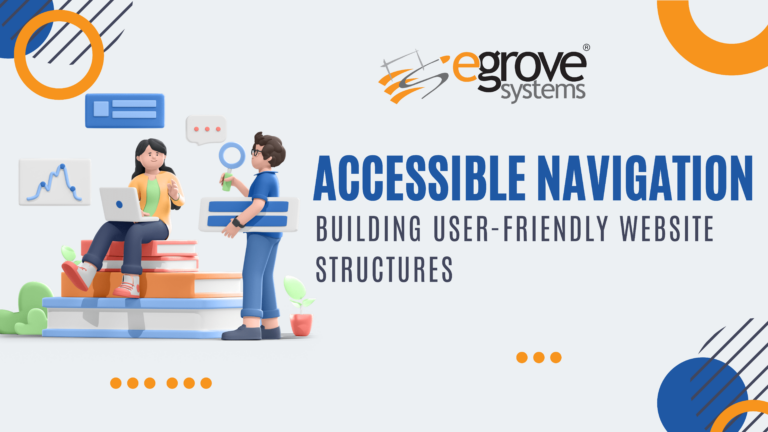The popularity of online shopping has monumentally increased in recent times. According to the latest statistics, a whopping 2.14 billion people purchased something online. The way the current trends and patterns are transitioning, very soon we can expect eCommerce to surpass retail stores vis-à-vis profit, market share, and usage.
However, what many people often forget is that the process of purchasing a product is distinct and different for each individual. To begin with, there is a significant proportion of buyers with disabilities who navigate different online stores. Without web accessibility, even the simple task of navigating an eCommerce site can be challenging for them.
In such a context, an accessible eCommerce store design comes to the rescue. It is a way to seamlessly resolve the differences in shopping experiences and provide an accessible platform for all. Interested in knowing more? Read ahead!
What Does eCommerce Accessibility Mean?
The goal of web accessibility is to make the internet—including websites, mobile applications, and digital tools—accessible to everyone, including those with restrictions, impairments, and disabilities. Included in it are the web accessibility principles that the Web Accessibility Initiative of the World Wide Web Consortium (W3C) created.
Therefore, to put it simply, eCommerce accessibility means making sure that all of your customers—disabled or not—have unhindered access to your online business to provide a smooth and inclusive experience. Therefore, an eCommerce website that is accessible allows customers from all backgrounds to make purchases. Accessibility must be the process of finding the product, choosing it, adding it to the basket, checking out, and completing the payment.
The four-point WCAG checklist must be taken into consideration to guarantee eCommerce accessibility. Among them are
- Perceptible Information
Your eCommerce store’s material has to be simple to read. People who rely on screen readers due to visual impairments, for example, need to be able to understand the material in your business. eCommerce shops need non-text content, such as images and videos, yet screen readers are unable to read it. For this reason, if there is any non-text information, you must provide descriptions and alt text.
- Comprehensible
The information and appearance of the online shop must be simple to comprehend. Thus, a simple user interface that is interactive and understandable for people with disabilities is what your eCommerce store should aim for.
- Easily Operable
An eCommerce store that is easily operable would improve its functionality and utility for all, including those with disabilities. For example, your website design should be flexible and accommodating to support the keyboard. Likewise, all the CTAs must have a link description text clearly explaining the purpose of the CTA.
- Robust
Lastly, the content of your eCommerce store should be easily interpretable by users with disabilities. It should be robust enough for assistive technologies like screen readers to interpret and maneuver through any hurdles.
Best Practices for Accessible eCommerce
- Enable purchasing a product using only the Keyboard
People with visual impairments or with limited use of their hands may not be able to use a mouse to navigate a website. Instead, they depend on the keyboard to move between links, buttons, and other controls. So, when pressing the Tab key, all elements must be operable and there should be a visual indication of focus.
- Remember that not everyone who visits your eCommerce Store sees in Color
Several products on your eCommerce site are sold in multiple colors. Someone who is color blind will have a difficult time selecting the right product if the color is not included in the description or the image alt text. Likewise, a screen reader will not understand the color of the different variants of a product if the image description does not mention anything regarding the color.
- Ensure Effortless Payment
Payment is an important part of the eCommerce store checkout process. For excellent accessibility, it should be designed to require the minimum amount of input. This can be done by enabling customers to save their information or leverage payment methods like Google Pay, Apple Pay, and Paypal.
- Provide enough time for users
Due to security reasons, the checkout time is often limited. However, this can be problematic for people who take longer to read, type text, or interact with the eCommerce interface. They might end up unable to purchase before the timer stops. To overcome the issue, there can be a warning alert informing users that the time limit is about to end and providing them with the additional option of extending the time.
- Indicate Checkout Progress
Checkout is usually a multi-step mechanism. It usually looks like this –
Cart > account > shipping > payment. However, some with an attention deficit or disability who get distracted easily might struggle to pick up where they left off if there is no indication of where they are in the buying process. To avoid the problem, you can offer breadcrumbs that highlight the checkout phase in which the user is, along with the steps already completed and the ones that are pending.
- Use Descriptive Link Text
While designing the interface of your eCommerce store, avoid generic terms like ‘read more’ or ‘click here’ when creating links. Instead, use descriptive link text that provides context about the link’s destination.
- Provide Transcripts and Captions for Videos
The seventh best practice that can make your eCommerce store more accessible is simple – add captions and transcripts to videos to ensure that people with hearing disabilities can understand the content.
- Informed Customer Support
Last but not least, it is crucial that the customer support of your eCommerce store is accessible too. So make sure to assist customers via different channels, such as live chat, email, phones, etc. This is a great way to accommodate people with different needs and abilities.
Wrapping it up
So, there we have it, a crisp overview of the top 8 easy-peasy measures you can take for accessible eCommerce. By making your online shopping store accessible to all, you expand your user base, bolster your brand image, and increase profits.







